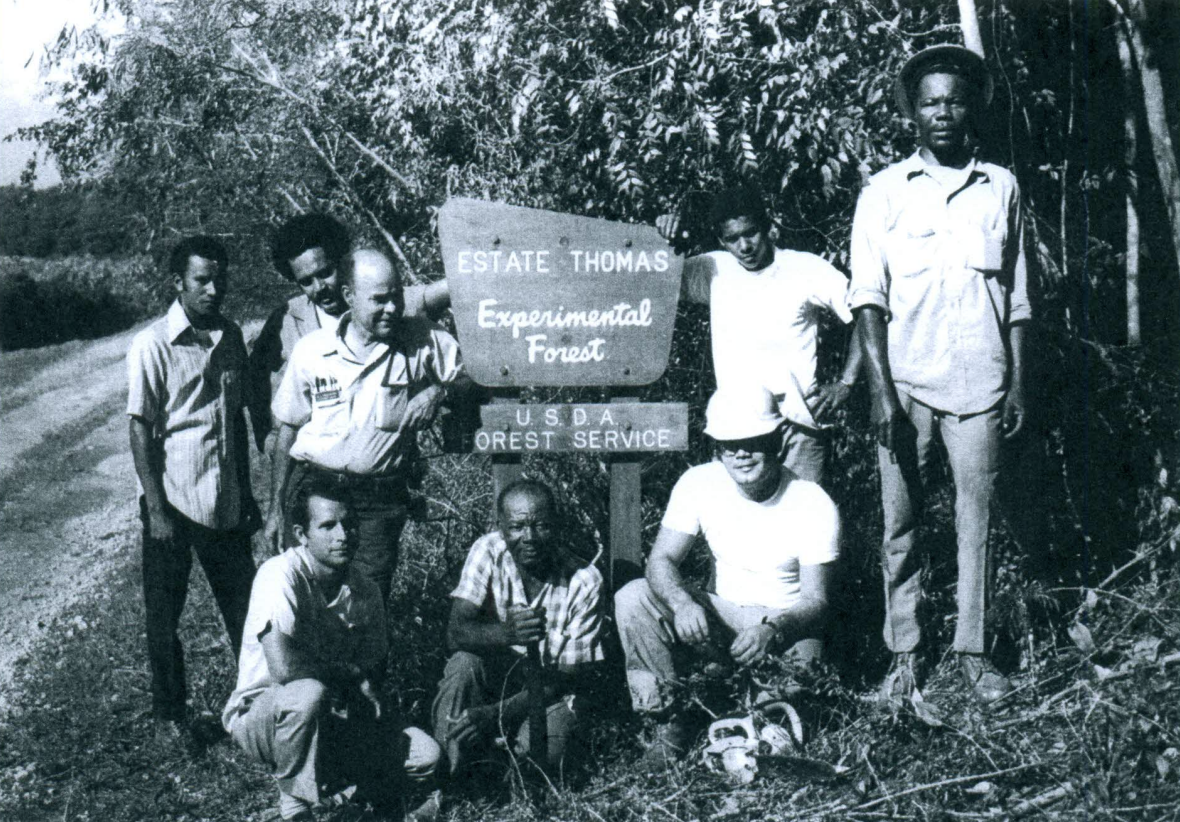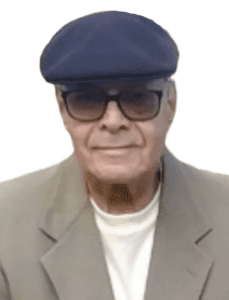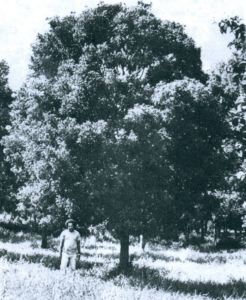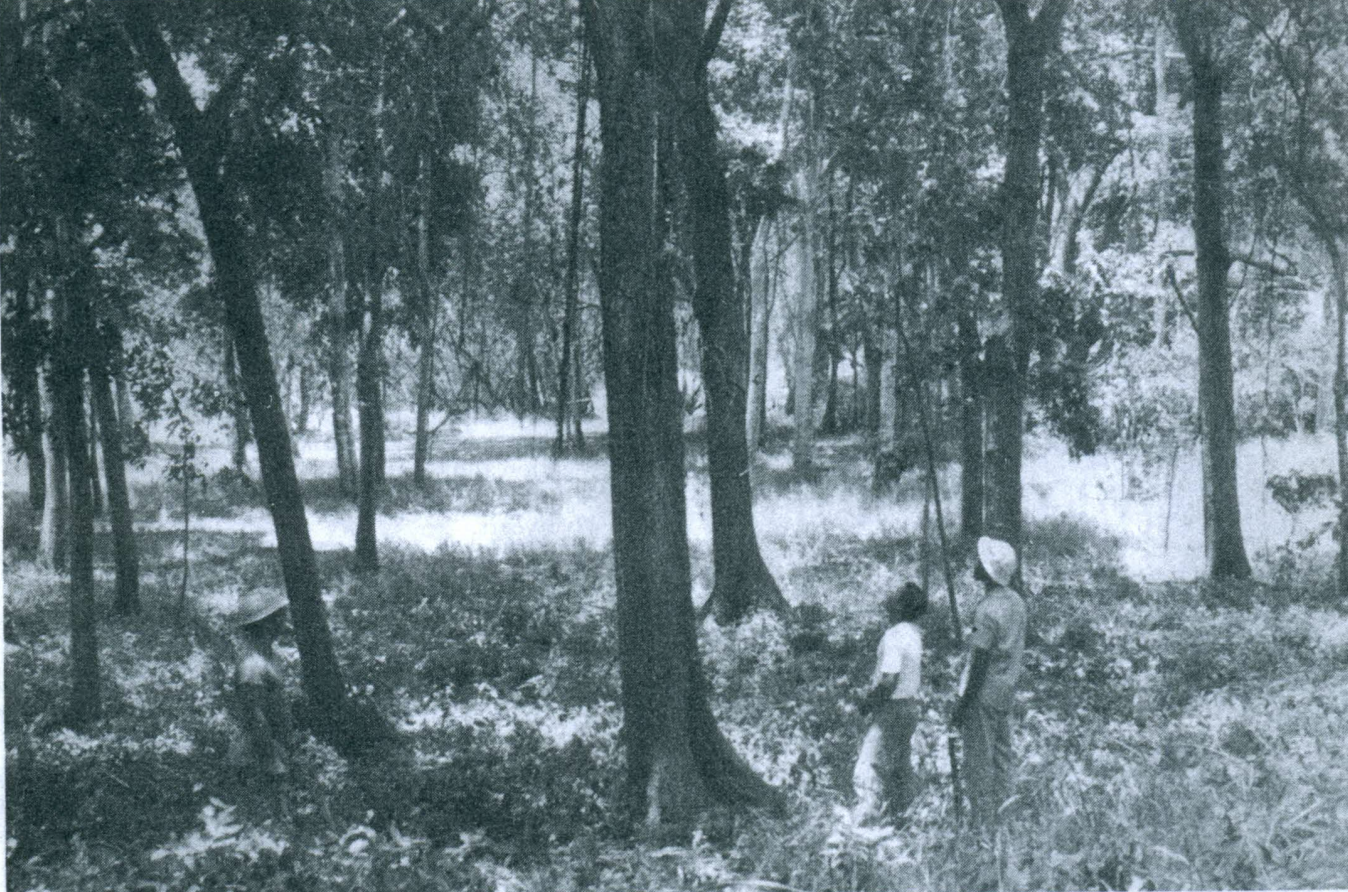
A few months ago, I attended Holy Cross Episcopal Church, which is located at Estate Upper Love, to surprise two special persons, Lisa Doward and Jackie Riviera Richard, for their birthdays. This historic church was established in 1908 to extend its ministry to agricultural workers who populated the central plain of St. Croix’s sugar estates and central sugar factories. It is a beautiful country church where at one time the stream that ran perennially east of the church was a major fishing hole for catching freshwater mudfish, “gut lobsters,” or “Kribeshee” as known by Crucians.

To my surprise, I met a great friend and a legend in the field of forestry — Larry Bough — at the church. The Bough family name is prominent in Virgin Islands cultural history. Having not seen each other for a while, Larry and I chatted about the old days of St. Croix. With a sad note, I never thought it would be the last time I would see Larry.
Larry Bough has fallen asleep in death. Believe me, life is very short — as short as a flower blossom in the morning rising sun that fades away before the night dew falls.
What a loss to the people of the Virgin Islands for a great man full of knowledge about forestry, agriculture and wisdom from those older people who went before him in death. The little country church was packed with Crucians and friends from all walks of life to give Larry a good send-off to his eternal resting place in St. Croix’s fertile soil.
Where can I begin? I can write several articles about Larry and the impact he had on the Virgin Islands’ agricultural industry, especially forestry. Larry, a native Crucian, was born in the late 1930s when St. Croix was a farming island.

There were no shopping centers like today on the island. In fact, the oil refinery and the Virgin Islands Alumina Corporation were not in existence on the south shore of St. Croix. Death was unheard of in those days unless you passed away at a ripe old age or from being sick. Crucians left their doors unlocked and saying good morning, afternoon, and evening was part of the culture. Larry was brought up by his parents and the entire St. Croix community
Back then, St. Croix was a close-knit society where agriculture was the major industry employing more than 2,000 people at the Bethlehem Sugar Factory and hundreds of small farms scattered throughout the island. According to Eric Hansen, an old Crucian military and former police officer, cattle ranchers from the east end of St. Croix used to drive their animals through downtown Christiansted, dipped their animals for ticks where the seaplane shuttle ramp is today, and shipped them out for export.
This was cultural in Larry’s young days. Besides sugar exports, St. Croix had a major cattle industry. Hansen went on to say, the older people from Larry’s days as a child knew which fishing boats to go and buy fish. Each fishing boat would blow a conch shell with a different sound indicating what type of fish they had to sell. For example, if the fish was yellow tail, the sound of the conch shell indicated the fisherman had that fish. We are talking about Virgin Islands culture that is lost forever. Larry lived it.
As a child, Larry hiked all over St. Croix. He swam in streams catching fishes, climbing trees for fruits, visiting family and friends, etc., etc., and attending church was common with him. After high school, he attended Inter-American University in San German, Puerto Rico. He graduated as a horticulturist and probably the first native forester of the Virgin Islands. The USDA forestry program started in the Virgin Islands in the 1930s when the U.S. Navy governed the islands.
Larry worked in all aspects of the forestry research program in the Virgin Islands. In 1974, Bough became director of the Division of Forestry and coordinator of U.S. Forest Service activities in the Virgin Islands. After Axel L. Frederiksen retired from the USDA Forest Service, the maintenance and responsibilities for the program transferred to the Virgin Islands Forestry Program under the V.I. Department of Agriculture.
The Estate Thomas Experimental Forest on St. Croix is the easternmost experimental forest and the oldest tropical dry forest in the USDA Forest Service Experimental Station of the United States where Larry once conducted research. In 1917, when the U.S. government purchased the Virgin Islands from Denmark, the St. Croix Sugar Factory owned Estate Thomas. The West Indies Sugar Factory bought Estate Thomas in 1928 and sold it in 1931 to Charles Andrew de Chabert.
The U.S. government and the U.S. Forest Service acquired Estate Thomas from the Virgin Islands Corporation in 1963 to be a tropical dry forest research station. It was from the forest experimental station at Estate Thomas that Larry conducted and carried out forest research plots throughout the Virgin Islands, particularly on St. Croix. I am talking about scientific forest research.
Thus, the knowledge in forest research acquired by Larry helped to enhance the Virgin Islands’ forest industry. In the 1930s, 40s, 50s, 60, and 70s, there were some 86 estates planted with trees on St. Croix. Such trees were Lignum-vite, various species of mahogany, teak, and other exotic tree species. These were timber species for local forestry production. There are more than 500 native tree species plus several hundred exotic species found in the Virgin Islands.
It was during Larry’s period that the hybrid mahogany was developed between West Indies and Honduras mahoganies, which were bred on St. Croix. It is known as a “medium leaf” mahogany because its leaves and fruit are intermediate in size between those of the two parent species. The medium leaf mahogany developed by Larry Bough and other foresters is drought resistance and with a superior wood quality of West Indies mahogany.
Whenever you see mahogany trees in the Virgin Islands, it was due to Larry and other foresters that St. Croix became one of the best areas in the world for growing quality mahogany wood. In 1997, the wood-working industry in the Virgin Islands was estimated at $5.6 million in our economy. There is a lot more to say about this great Virgin Islander, Eric Lawrence “Larry” Bough. Next time I will follow my mind and write a series of articles about the mahogany man Larry Bough.
Believe me, whenever you see a mahogany tree, Larry lives in all of us Virgin Islanders. Rest in peace my great friend!

— Olasee Davis is a bush professor who lectures and writes about the culture, history, ecology and environment of the Virgin Islands when he is not leading hiking tours of the wild places and spaces of St. Croix and beyond.


